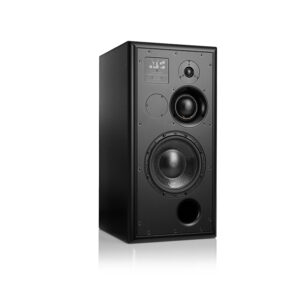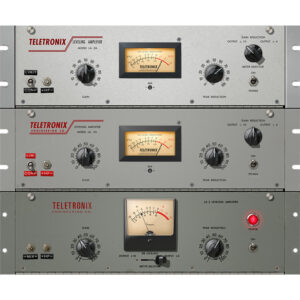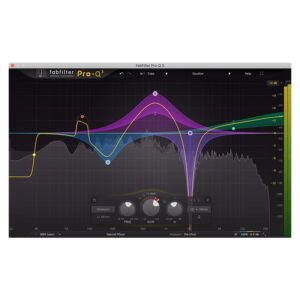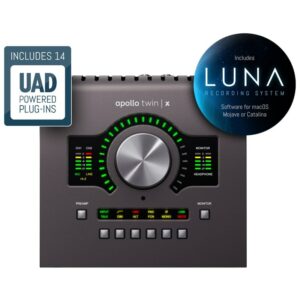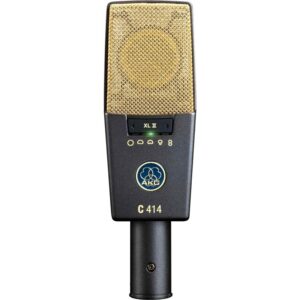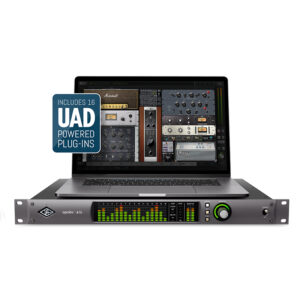proFILES
Ehren Ebbage
With several years of experience collaborating with Westlake Pro, Ehren Ebbage has earned recognition as an award-winning songwriter, producer, and composer. Formerly a member of Justin King and the Apologies on Epic Records, Ehren has curated a diverse portfolio that extends into television, film, and music.
Discovering his niche in audio production for film and television, Ehren has composed and produced music for numerous shows airing on various networks across the United States. In 2013, he received the BMI Film & TV Award in recognition of his contributions to the series Undercover Boss.
In 2019, Ehren encountered an opportunity to produce the upcoming release, “Five Seconds Flat,” for the emerging indie sensation Lizzy McAlpine. Amid the widespread impact of the pandemic, Ehren faced the challenge of creating a robust yet portable recording setup to facilitate the production of Lizzy’s release in these uncertain times. Ebbage sought the expertise of Westlake Pro Audio Specialist Danny Fasold to select the most suitable tools for the task.
We interviewed Ehren Ebbage to delve into his creative process and uncover how he managed to produce a successful record in the midst of an unpredictable environment.

Photo by Dmitri von Klein
Westlake Pro: Thanks for taking the time to chat with us! Tell us about yourself and your work.
Ehren Ebbage: I’m a composer, songwriter, and producer. I hesitate to call myself an engineer, but I do a fair amount of engineering.
I’ve had a bunch of different versions of this career – I played guitar in a band that toured the country and had a record deal with Epic in the 2000s. I spent a short while after that pursuing a similar sort of career path as a solo singer-songwriter. I worked for a bit as an assistant engineer at a cool spot in Burbank called ‘The Bank’ which was owned by my friend Zac Rae and his studio partner Joey Waronker. Being around record-making all day was amazing; it was really through that experience, combined with changing life circumstances such as getting married, that I learned that I prefer working behind the scenes rather than pursuing a career as a performer.
From there, I got an opportunity to write some instrumental underscore music for television, and that was great. It helped me make the leap from assistant to full-time composer/producer. I focused on writing music for media for quite a while, and I still do a fair amount of that.
My wife and I moved around from LA to Seattle to Nashville and finally wound up back in my home state of Oregon, where I met Philip Etherington, who went on to start working with Lizzy McAlpine. He started on her first record and reached a certain point where he felt he could use some outside help with it. He asked me to help on a few songs on her first record, and then she had both of us work on her second record.
Since that relationship started, I’ve been doing more and more writing and production with artists again. I thought my life was leading me away from that world, especially when we decided to move to Oregon. As it turns out, moving here led to all sorts of new opportunities.
WLP: You recently worked with Lizzy McAlpine for her latest album five seconds flat, which has been very well received. The album was recorded in some strange conditions – can you tell us about that?
E: Yeah, it was. At the time, the room I’m sitting in now was being built but wasn’t finished. Lizzy wanted to get started on the record, and she wasn’t able to wait for my studio to be completed. Lizzy and Philip rented an Airbnb, and we brought all of our gear and set up a studio there until my place was finished. While we were making the record, Lizzy wanted to record a “live in the studio” EP, which we did at my place. At some point in the process, Lizzy and Philip both moved to LA, so operations moved down here into Philip’s space.
Honestly, a commercial studio would not have been ideal for the record we were making. The atypical ‘studios’ we worked in ended up being the right environments for us to make this sort of music.
We are in an amazing time in music making. Because of the equipment available to us, we can be confident in a decision to go to a house and sort it out when we get there. Having these tools available to us expands the horizon and opens up so many creative options. We’re in this golden age of music production where equipment is more accessible to more people than it ever has been before.
Also, the boundaries that used to divide genres are almost non-existent. I feel like artists feel a greater sense of freedom to move through genres and explore different ideas than ever before.
WLP: five seconds flat is lush, colorful and full of hushed and intimate sounds that coalesce into larger-than-life soundscapes. Can you tell us a bit about how this was achieved?
E: It always starts with the source. Lizzy sings so quietly. Even when it sounds like she’s singing big, her volume is actually so quiet. That has a huge part in how it ends up sounding in the end. It’s similar to how if you hit a drum hard, it sort of chokes the sound, but if you hit it soft, it’s this big, warm, round sound. I think there’s something similar going on with her vocals. She sings really quietly, so it’s never pinched or strained or anything but big and warm.
WLP: The songs are great and her voice is fantastic. You colored the album’s sounds in really fun and exciting ways that draw the listener in. What were some of the tools you used for that?
E: All of our interfaces were Apollos. As for preamps, The Tree Audio Branch was a consistent winner. We had a nice selection of additional outboard stuff, but honestly, the tools we used that impacted the sonics most were mic choices. We fell in love with these little Audio Technica boundary mics. A lot of that really intimate sound where you can hear every detail was actually recorded on those mics.
Another mic that’s on most of the songs is a newer AKG 414. That was really Philip’s call, and obviously, he made a good choice. Lizzy’s a quiet singer, and the noise floor is so low on those microphones that it saves some noise-related headaches. Also, Philip really likes how they handle EQ. You can get pretty wild with EQ, and the sonics hold up.
WLP: Your Instagram has a lot of interesting approaches to creative sound design, creating larger-than-life sounds by recording micro instruments and household items and turning them into massive atmospheric sounds. Did that play a role in your approach to Lizzy’s latest record?
E: That played a massive role. My co-producer Philip and I are both so into exploring sound. When we’re together it really becomes a lot of that.
When it comes to instrument choices, the source is always the most important part of any sound. We fell in love with small amps and certain acoustic guitars that just had a certain feel to them. We also used one of the little Casio keyboards that can take a couple seconds of a sample…made lots of sounds with that thing.LP
WLP: Was there a lot of post processing? Did you rely on any particular plugins?
E: There was a ton of processing every step of the way. I am almost certain there’s not a single song that wasn’t full of FabFilter plugins. There’s a Pro-Q or Pro-MB on almost every vocal track. Klanghelm SDRR, a really great saturation plugin, also wound up on a lot of vocals.
On the UAD side, the Summit TLA-100A Compressor is definitely a go-to for me. The AKG BX 20 Reverb, I love that one. It has some of the cool characteristics of spring reverbs. I love springs, but some of them are just too sproingy. The UAD AKG spring reverb is characterful, but still kind of well-mannered. You can use it on way more sources. It doesn’t immediately just make you think of the ‘50s every single time you use it, you know?
I really use and love so many of the UAD plugins – the EMT 140 Plate Reverb, Curve Bender EQ, and Helios are some of my personal favorites. Of course, I love all the stuff that everybody loves – the 1176, LA-2A, LA-3A. I also really like the Oxide and Studer Tape Recorder Plugins.
It’s just amazing that we have all of this at our disposal. The fact that we have all of those sounds right with us, and we can take them anywhere, is truly incredible.
WLP: What made you choose Apollo and how does it benefit your workflow?
E: I have had the Apollo 8 forever, and I recently needed more inputs in my new room. I ended up going with the Apollo x16 for so many reasons, with reliability being a major factor. I turn it on, it works, and I’m not fussing with it all the time. It also helps that more and more of my collaborators work with them, and it’s so easy to send session files back and forth, or show up to somebody else’s place and just plug in and be familiar with their equipment and workflow.
I need to travel to work, and I wanted to keep continuity between a travel rig and my studio rigs. It really drives me crazy to open a session and have to redo all the I/O. I just wanted to keep as much continuity as possible. So I have a spare Apollo that I can just pull off the shelf and take with me where I need to go, and everything just works. The preamps sound great to my ears, and I don’t feel like I’m compromising when I use those on somebody’s project. It was the ideal solution when taking all that stuff into consideration.
I have an Apollo Twin and an Apollo 8, which makes for a perfectly customizable travel rig. if I’m going somewhere, and if I have no need to track or anything like that, I can bring the Apollo Twin. If I’m going to be recording more than one thing at a time, I’ll bring the Apollo 8. It’s so nice to have all those options in the same ecosystem, and it all works together to form one gigantic rig whenever I need. It’s all just very seamless.
WLP: Did you work with Danny Fasold on the Apollo trade-in that Westlake Pro offers?
E: I did take advantage of the Apollo trade-in when I purchased the x16! Danny has been incredibly helpful with all sorts of things. For example, when I wanted to upgrade my monitors, he arranged a listening session so I could audition a bunch of options. I can’t listen to those kinds of speakers anywhere near where I live in Oregon, so I had to go to LA to check out monitors. I went to Westlake Pro and got to listen to lots of different options that Danny had set up. I ended up going with ATC SCM50s. For me, that was a pretty massive investment, and not one that I wanted to make without being sure. Danny was a huge help in that regard. Interfaces, microphones – I see a bunch of stuff that he’s helped with in my studio. I’ll ask him about small stuff, too. He’s just been a great resource for me.
WLP: How has the accessibility of gear and recording tools allowed for more time and more room for exploration in any setting?
E: In the past, there was a significant compromise that you had to make. If you were going to make a record on affordable home studio equipment, you were going to make a compromise sonically, without a doubt. Now, because we have so many great options we can make creative decisions without compromising quality. We can record where we want, and take as much time as we need to, without sacrificing the quality of the audio.
We are at this point where three people can make a record in some random environment, and have the tools. So as long as we do our jobs well, the record can exist out in the world, right next to any other record that exists out in the world, at least from a sonic perspective.
WLP: It seems like there was a lot of exploration within the songs and doing different versions. Do you have any fun stories or examples of that process that you’d want to share?
E: Something that I really admire about Lizzy is that she does not settle for something that she doesn’t believe in. The entire album project was a process of trying ideas and getting her reaction. Every song had multiple versions, and we tried so many things. On some songs, the final result came from developing and refining an idea in kind of a linear sort of way where some of what we started with ended up making it all the way to the end. Other songs, we kind of mocked up a complete vision for it and the entire thing was just left behind.
WLP: It seems like there was a lot of exploration within the songs and doing different versions. Do you have any fun stories or examples of that process that you’d want to share?
That was the goal. To Lizzy’s credit, I don’t recall a single moment where she said something that is often said on projects, where it’s like, “we just have to go with these drums because we’re out of time, and maybe they’re not right, but we just have to use them and move on.”
I feel like what the world needs, what artists need from me, and what I want to make with my own music, is for it to be meaningful and impactful and soulful. I want my music to say something. I don’t want to let it out the door if we haven’t tried to do something interesting. And when it comes to other people’s music that I work on, hopefully they have that same sort of philosophy about not settling until it’s really right for them.
WLP: Has writing music for media influenced your production when working with artists? Do those two workflows influence each other?
E: For sure! It’s hard to imagine how they couldn’t influence each other, especially workflow-wise. One thing about making music for media is that TV shows have rigid deadlines with expected deliverables that must be usable.
Doing that work has had a massive impact on my personal creative process, because it forces a person to learn how to work quickly, make decisions quickly, execute ideas quickly, and to get comfortable with the feeling of looming deadlines.
When you’re doing work in the media world, you have to get comfortable receiving criticism. A national brand is not going to use your piece of music unless it works for them. And if it doesn’t work, they’re going to tell you that it doesn’t work. You either fix it, or they don’t use it – there’s not really a negotiation there. You’re just totally in service.
I think receiving criticism is a skill that can be developed, and bringing that skill into working with artists is really handy. If somebody says “this isn’t working for me,” it’s helpful to be able to shift gears quickly and not take it personally. Instead of going through a process of defending your creative idea, figuring out what needs to change and moving on helps keep the creative process moving freely and easily.
With the tools that we have, it’s almost like having the force – there’s no barrier to keeping moving and get stuff out of your way. If an artist or media client feels that an idea isn’t working, we can save a project as a new version, delete and import whatever we need in two minutes, and then we can move on immediately.
Essentially, technology is not a barrier at this point. It empowers us to make all of these creative decisions and to do them confidently. It’s just a massive creative advantage that we have.
We’re in a moment where because of the tools, because of the access and availability that people have, it’s really just about the creative idea itself. And great ideas can come from anywhere, they don’t have to come from LA, or Nashville, or New York, or London. And I just love that anybody, anywhere, can find a way to get their idea across, and their idea can live right next to anybody else’s idea on any playlists.
WLP: What’s next for you?
E: Lots and lots of writing and producing.
From Ehren Ebbage's Studio
-
-
Universal Audio Teletronix LA-2A Leveler Collection
$299.00Add to WishlistAlready In WishlistAdd to cartAdd to Wishlist -
-
-
Universal Audio 1176 Classic Limiter Collection
$299.00Add to WishlistAlready In WishlistAdd to cartAdd to Wishlist -
AKG C414 XLII Studio Condenser Microphone
$1,319.00Add to WishlistAlready In WishlistAdd to cartAdd to Wishlist -
Universal Audio Apollo x16 Heritage Edition (Rack/Mac/Win/TB3)
$3,999.00Add to WishlistAlready In WishlistAdd to cartAdd to Wishlist
Have Studio Needs?
Contact a Pro.

